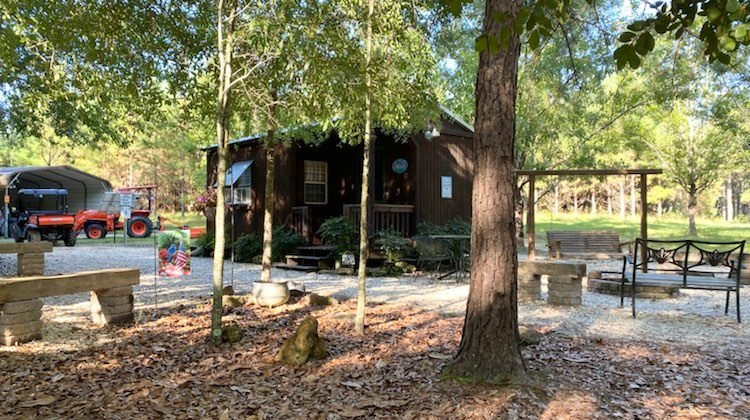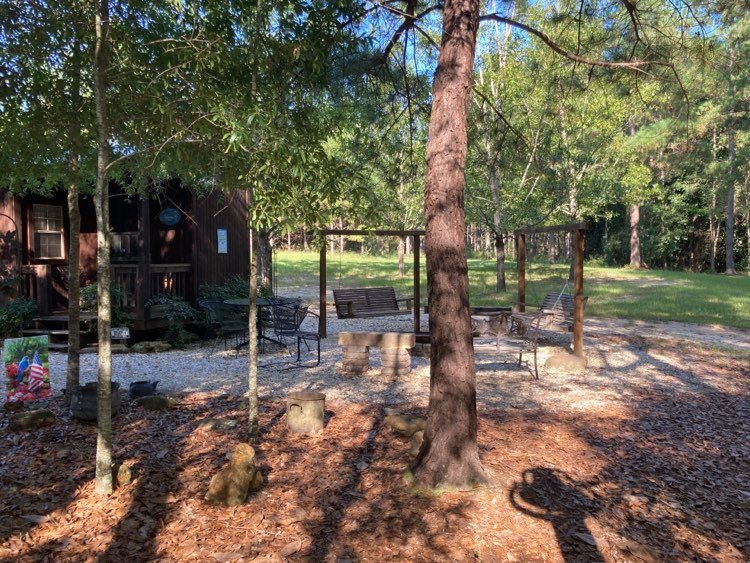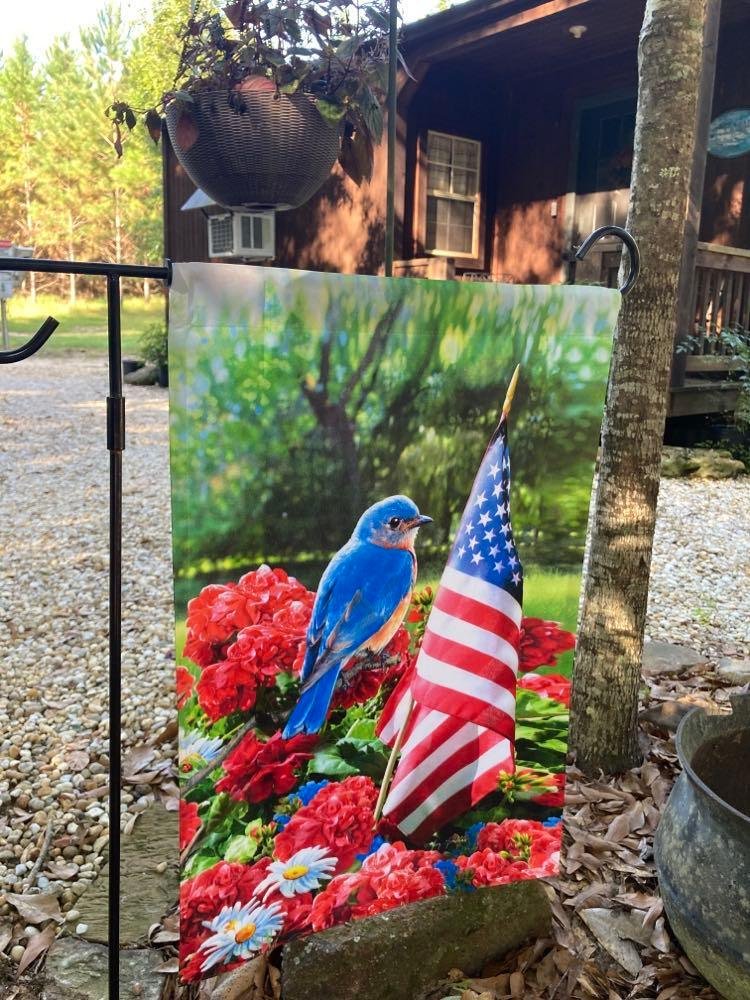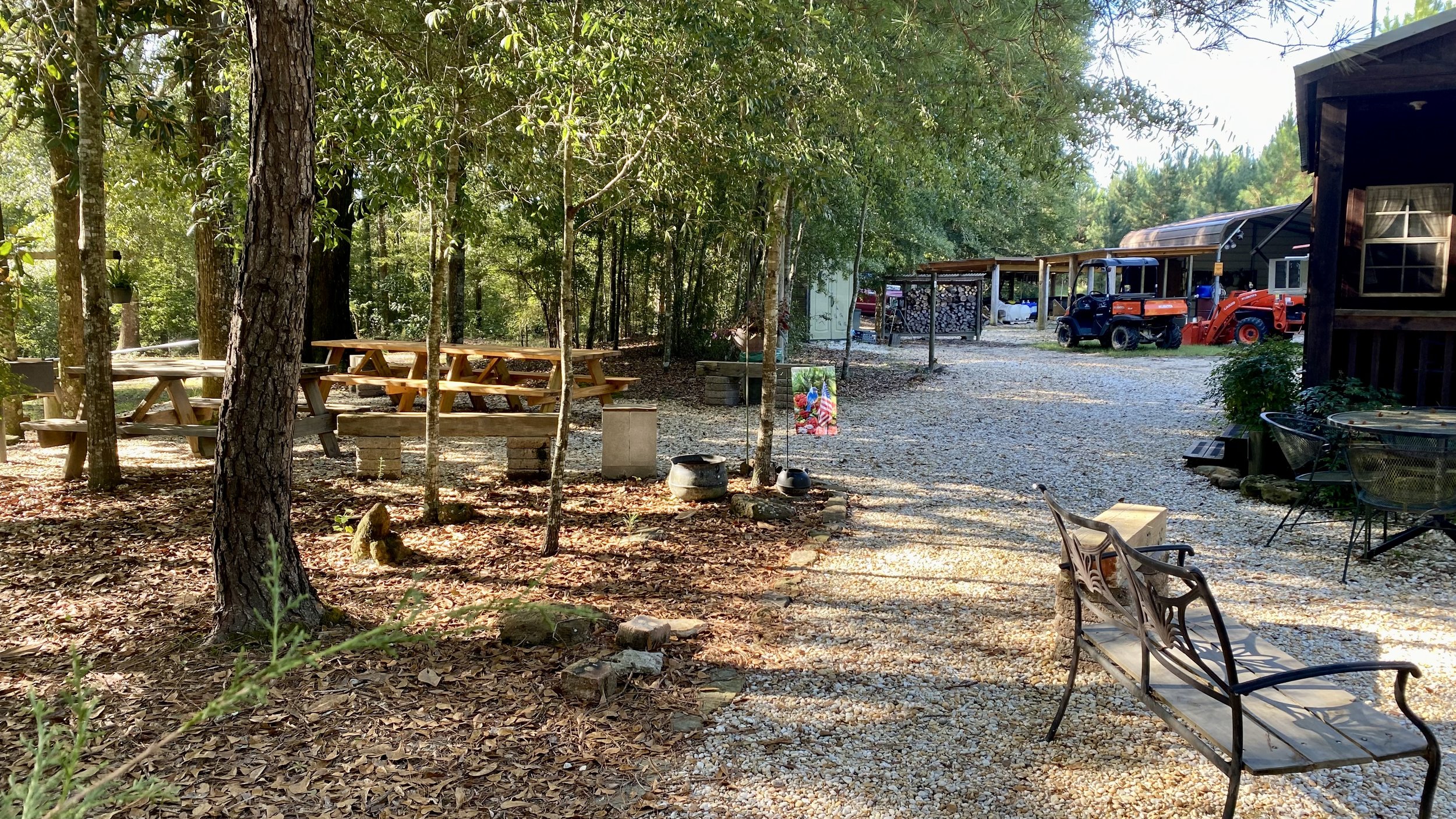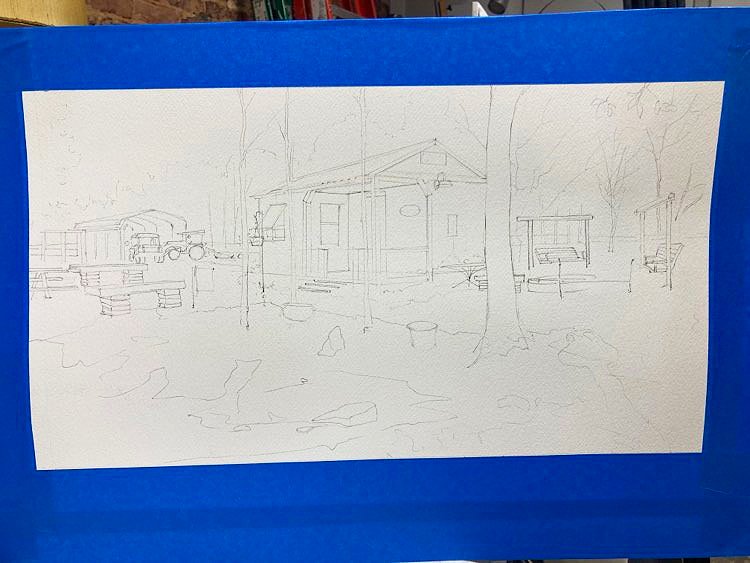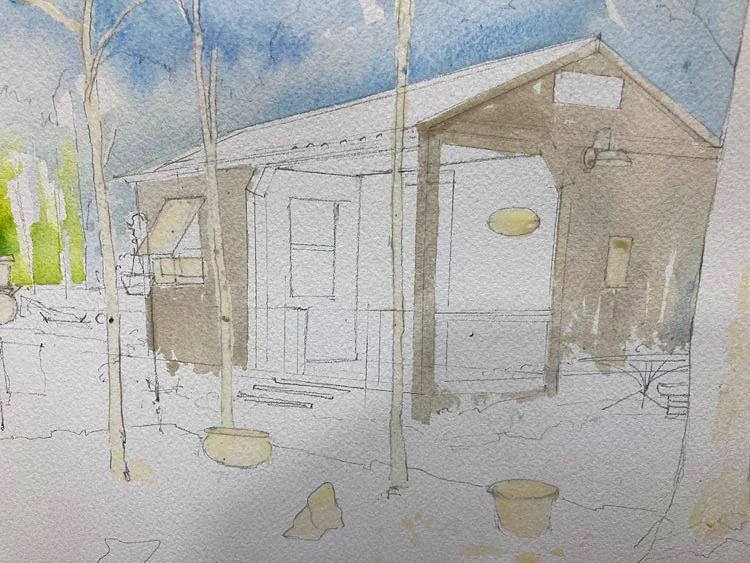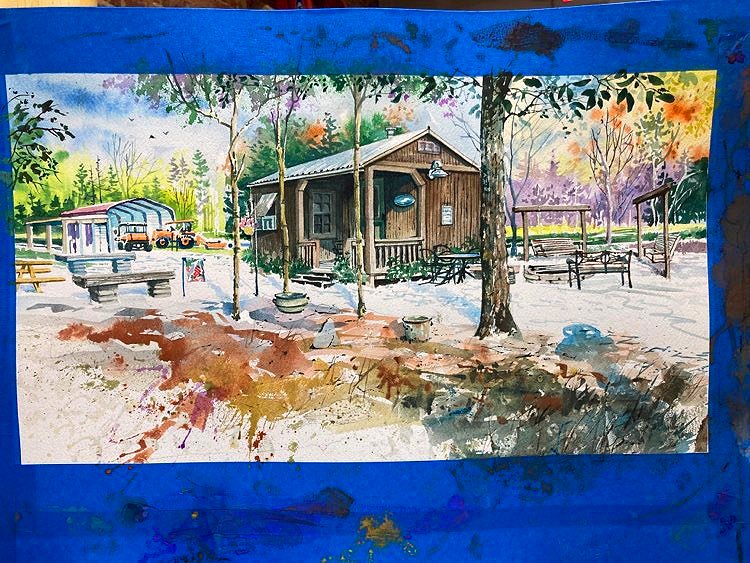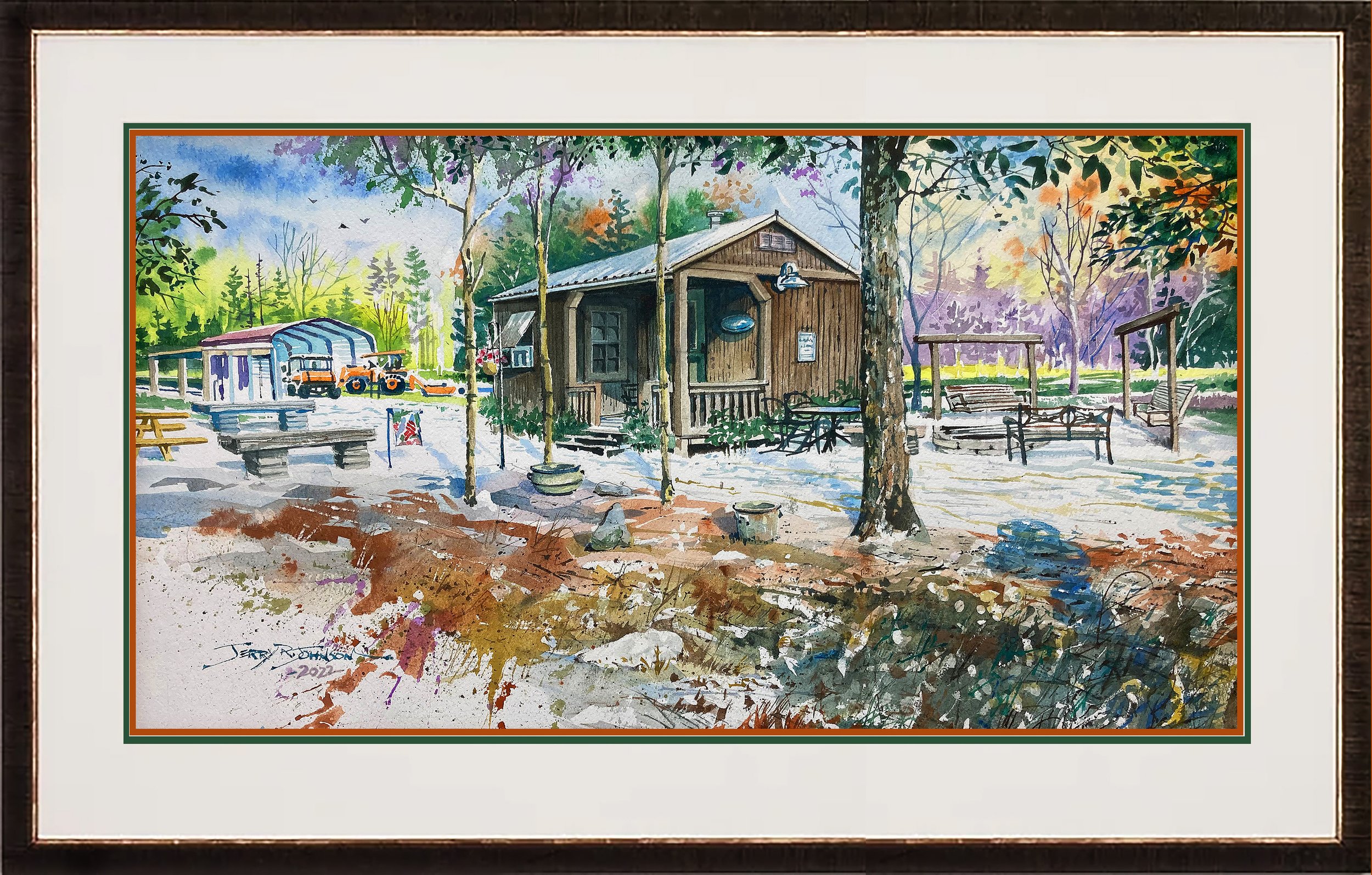Hey, Jerry! Do you know…
anybody that I can commission to paint a picture of my family cabin?
“I have to be honest, it has been YEARS since I took on a commissioned painting. When I was approached by someone asking me this question, something welled up within and I declared to myself, ‘C’mon! You can do this! You’ve been doing commercial art for years!’”
Besides, it was a dear friend of mine and he deserved the best, right? Lol. Seriously, after two or three decades of primarily doing computerized, design work for numerous clients, I was ready to actually paint again—like I did years earlier in my artistic journey.
My friend described what he was looking for—a transparent watercolor painting of a “cabin in the woods” that he and his wife have spent years preparing and enjoying. This cabin is on family property near Banks, Alabama going back for years so it has significant meaning to them as well as to their children and grandchildren.
As you can see from the notes I made below, my friend had a strong level of specificity in what he desired. I was fortunate to get a personal tour of the cabin property as well as a viewing of the transparent watercolors (mostly rural landscapes) in his private collection before I began sketching. I thought I had a good idea as to his expectations.
Reasons for doing this commission?
As I’ve stated before, I’ve primarily been a “designer” or “commercial artist” for many years. I have no problem trying to please a client, in fact, that’s been my primary goal. Of course, in this instance there was even greater possibility of personal satisfaction because I truly desired to:
get back into transparent watercolor as an art medium;
paint some local, rural landscapes; and
do something nice and meaningful for a family whom I loved.
Gathering the necessary resources to begin.
During my visit to the “cabin in the woods”, I took numerous photos and made a few light sketches/notes. The client (my friend) also provided some photos of his own which were extremely insightful because it better revealed to me how he viewed the space.
This was not going to be an easy composition because it involved so many elements that were important to the client. Here are a few:
the cabin (of course) • outdoor gathering areas with picnic tables, stone/wood benches, stone fire pit, swings, tables, chairs, and more • lots of foliage (trees and plants) • iron bell on wooden post • outbuilding with lean to • Kubota tractor and four-wheeler • some outdoor pottery • some positioned, large rocks
Here is a sampling of the many photos that we took on the property.
So the work began!
We determined that the finished, image-size would be 18” wide by approximately 10” tall. That’s not a huge footprint for so many elements in a composition. I knew I would have to edit carefully and force the atmospheric perspective a bit (making things look farther away by simplifying details, cooling the colors, and diffusing the clarity).
I first worked out the overall composition and sought approval from the client. That initial drawing is shown below. The client approved of the layout so I began masking some areas with a liquid mask called “Frisket Masking Fluid”. For those that don’t know, a “transparent” watercolor means that the whites that are seen in the painting are simply white paper showing through. The general rule is that you paint light-to-dark (unlike oil or acrylic painting). To aid in this process, the painter can use several methods, but the one I chose was brushing on a liquid mask which dries rubbery and can be peeled off later in the process—preserving the paper or color beneath.
Original light, sketch on Arches 300 lb. Watercolor Paper
As with any art-making or craft, the process is critical—both in technique and in preparation. The final point-of-view for the painting did not allow for the wanted, iron bell to be in the field of view. So, after discussing with the client, it was determined to have the bell cast a shadow from its actual location onto the foreground of the scene (bottom right).
One more issue did arise during the process. Due to the thick foliage in the original photos, I did not notice the “chimney” peeking from the back side of the cabin roof. Since we wanted to thin out the low-hanging limbs and foliage to allow for the roofline to be seen, I needed to lift the background pigment a bit by moistening and scrubbing (thank goodness for durable, 100% cotton paper) to add the chimney (a lighter colored element) over the greenish background behind roof line.
I hope that an explanation of this process was enlightening a bit and even helpful in understanding transparent painting and working out the problems of a commissioned work. Blessings always and feel free to contact me should you wish to discuss a commissioned watercolor or other creative work.
If you would like to see more works like this (or even not like this), feel free to visit my studio by appointment at 113 North Three Notch, Troy, AL. Enjoy!



